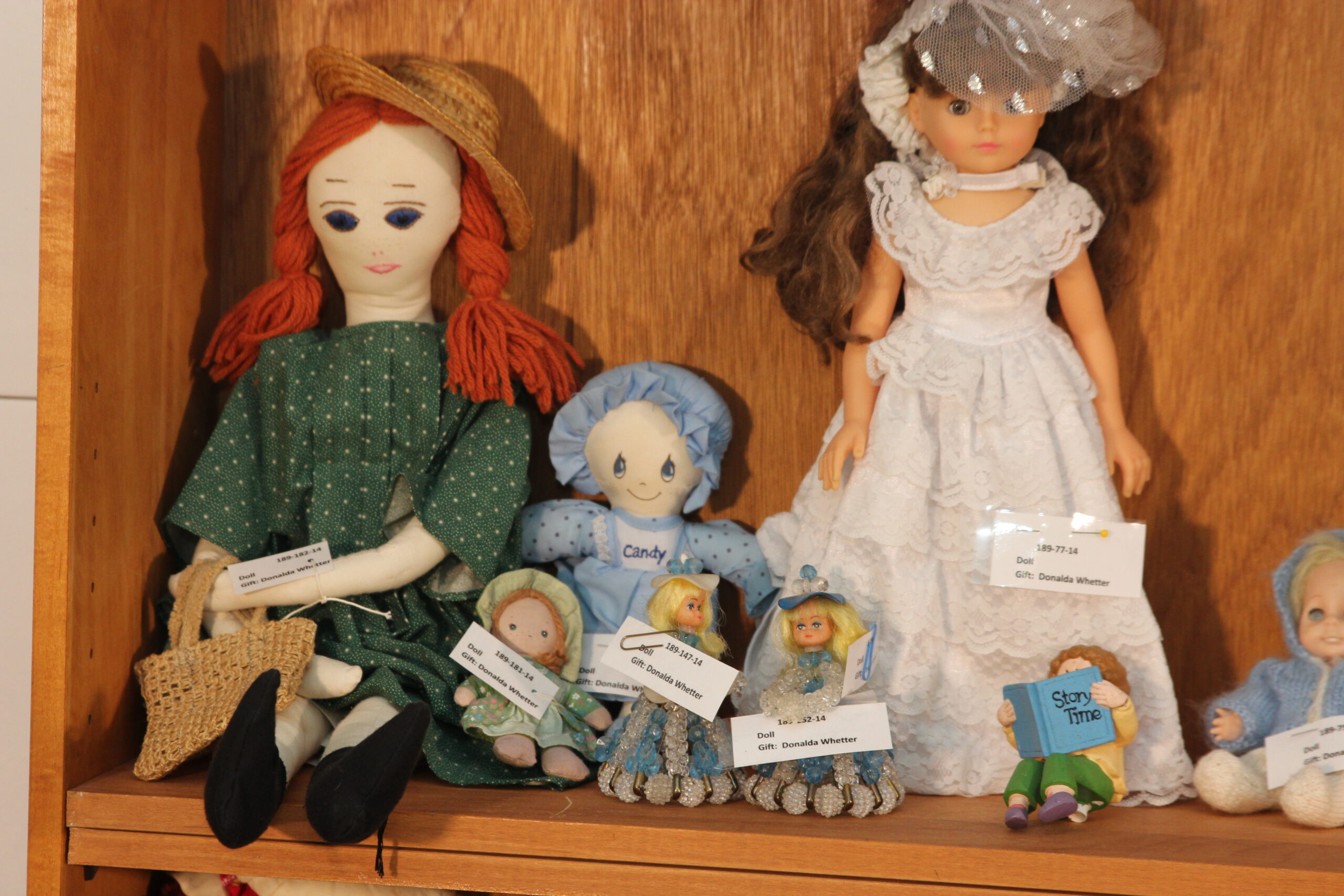1- History of Museum building
The building which houses the Hart Cam Museum was built by The A. E. Hill Co. Ltd in 1902.The company operated a General Store in Hartney from 1886 until 1983. The building stood empty until Kim and Garry McBrien bought it and opened Hill’s Street Market a combination craft store and restaurant. This business operated until 1999. In 1999 the Hart Cam Museum moved into the building. It is also the home of two movies, The Lookout and The Stone Angel. The museum is completely wheel chair accessible.
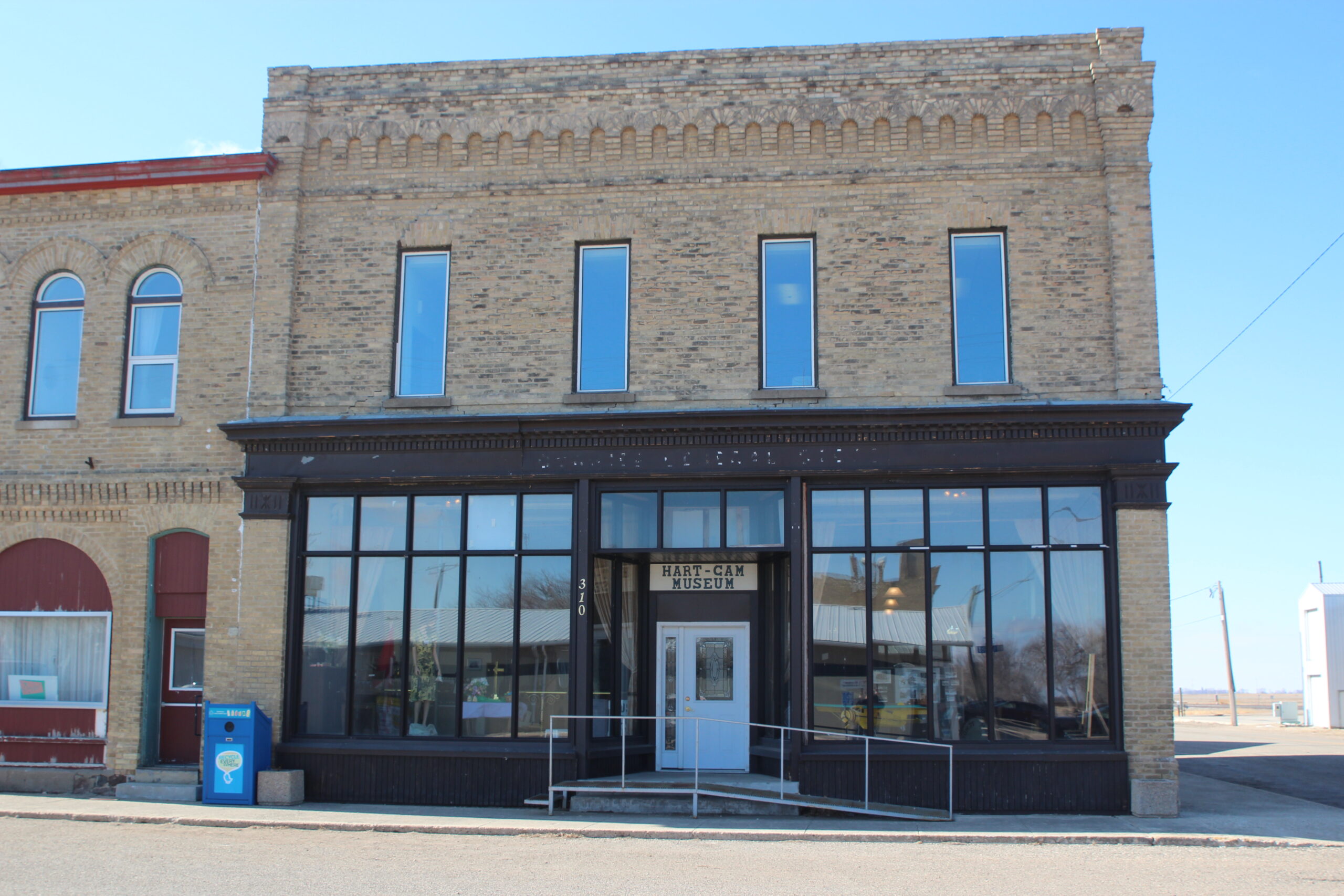
2a- Drum
Original drum of the Hartney Marching Band. It was used as early as 1894.
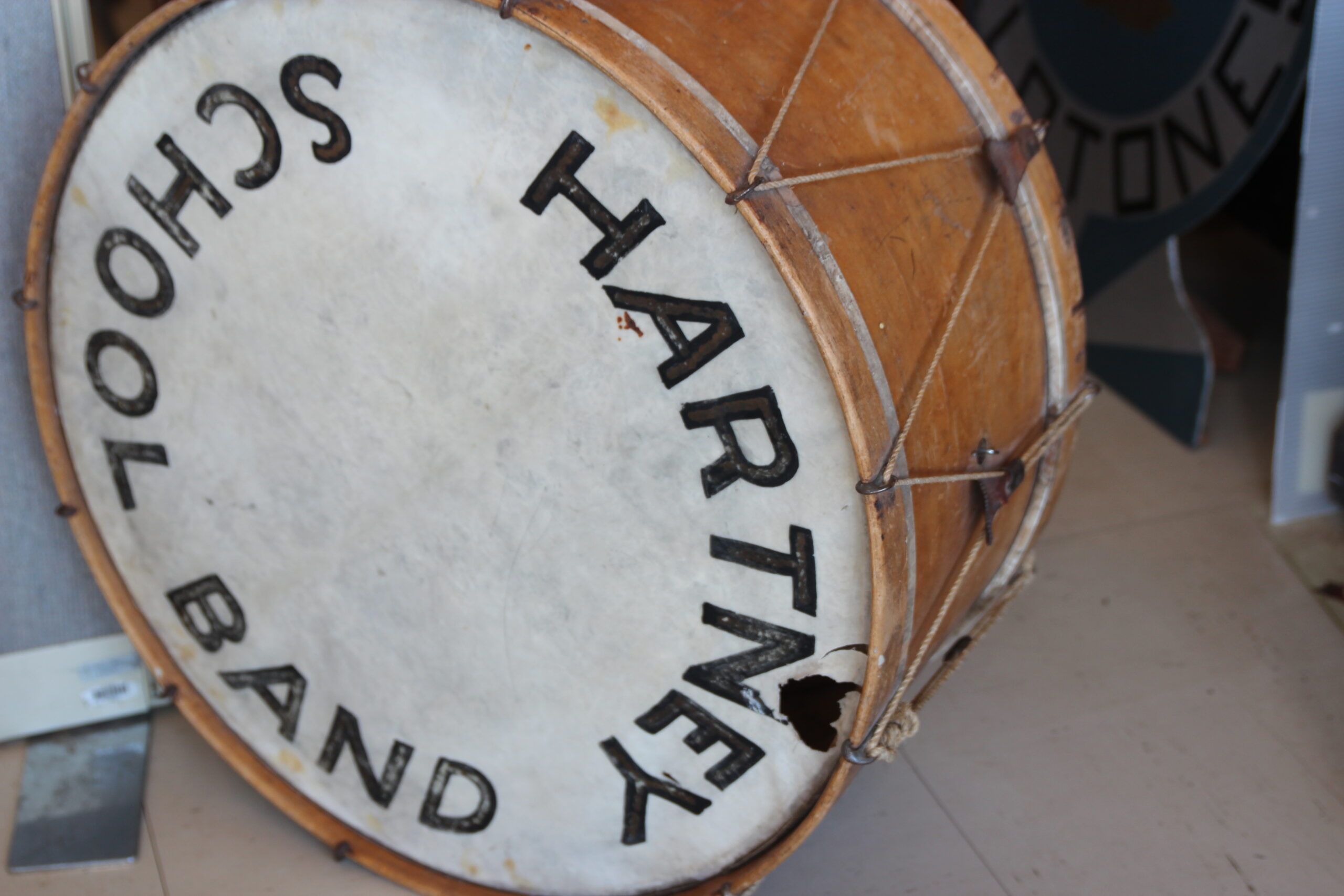
3. Cupboard
This cupboard originates from Louis Café. (Picture showing Sai Louis and Louis King and the cabinet.)
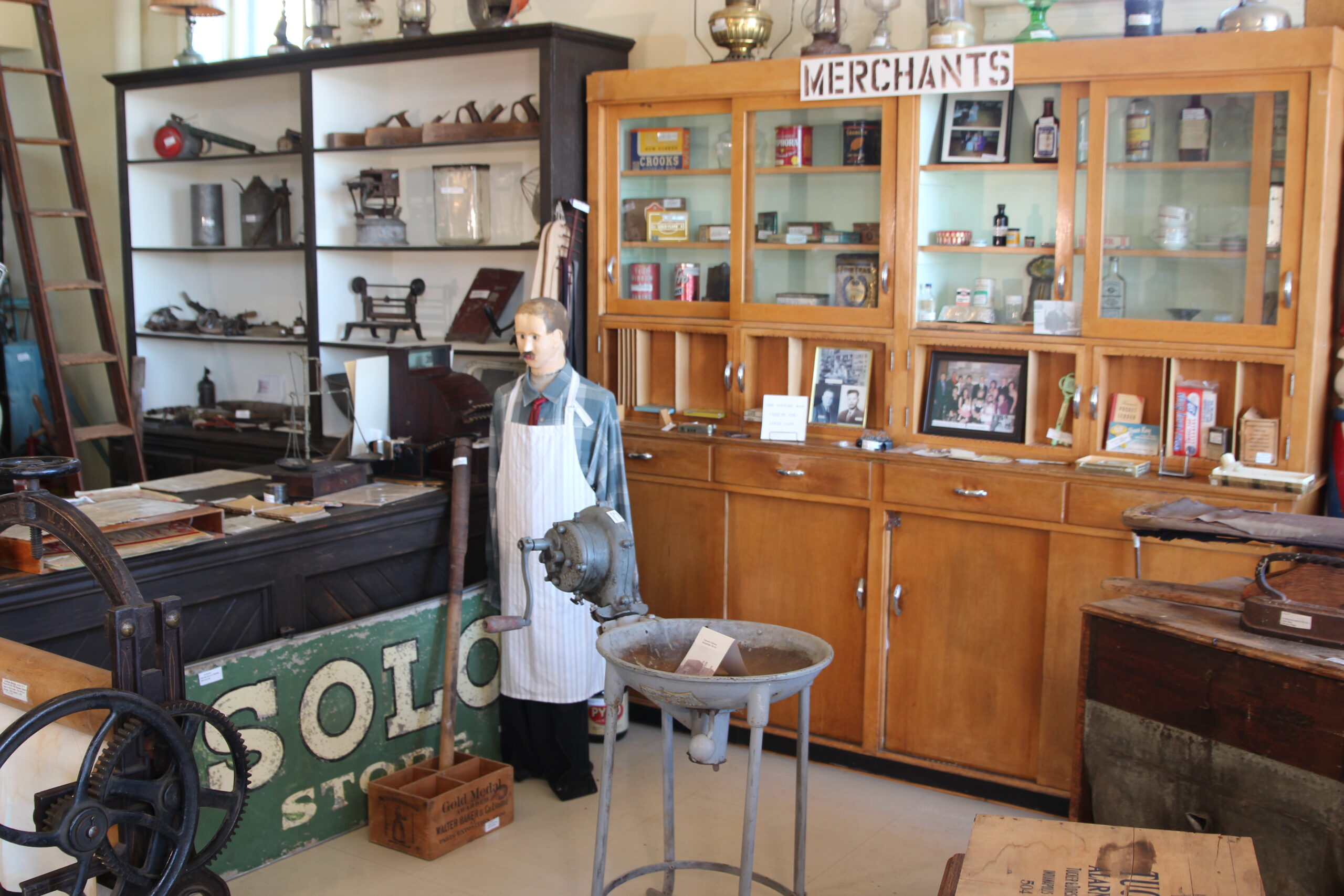
4a. Ladder
originally used on the other side of the building when operated by The A. E. Hill Co. Ltd. The ceilings were very high and the ladder ran along a track in front of open shelving filled with boxes of goods to the ceiling. This was the only way to reach many of them.
4b. Scale
Scale originally used by the Melgund Beef Ring. (Article about beef rings on top of it)
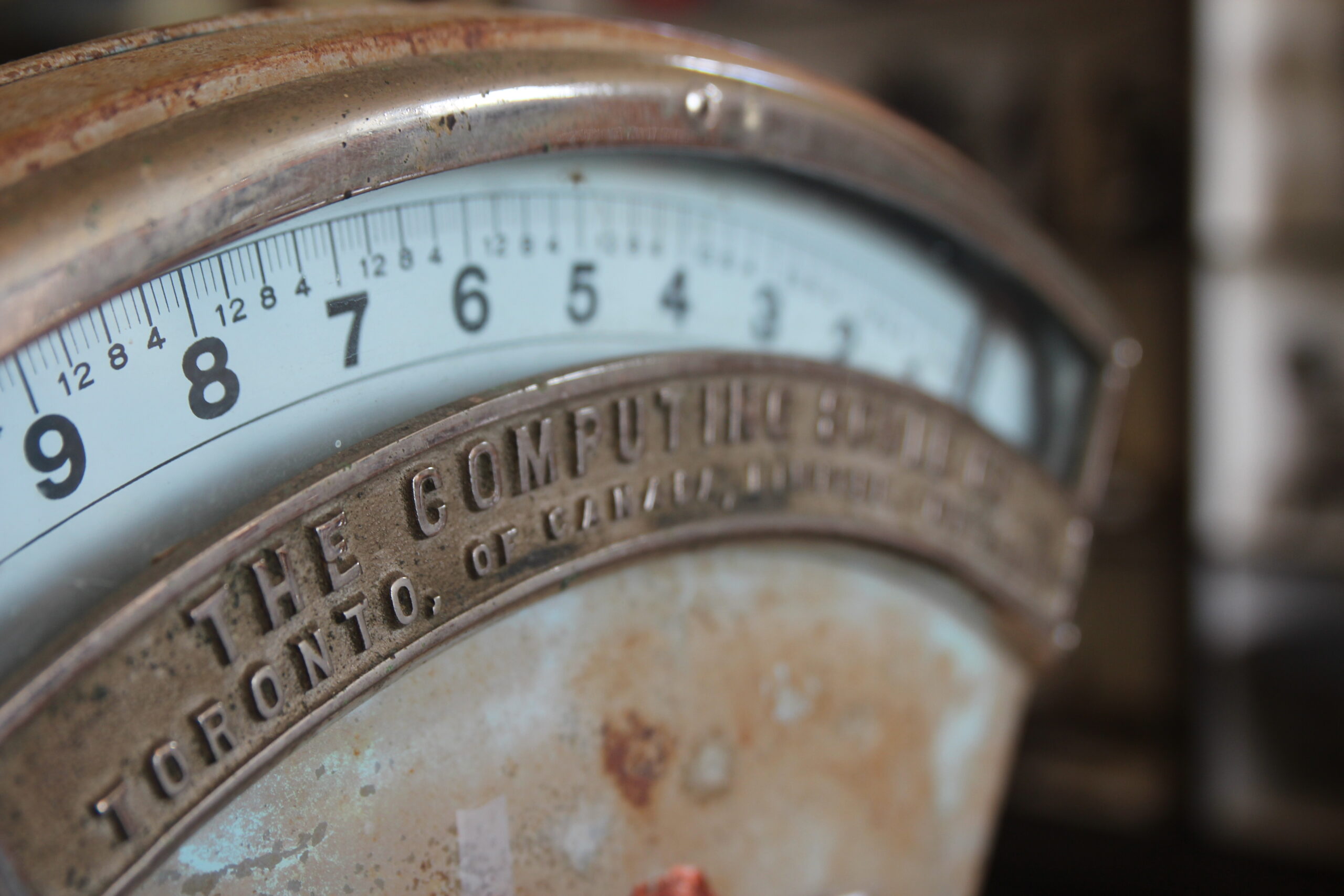
5a. Arrowhead collection
One of the largest arrowhead collections found on one farm in Manitoba. All the arrowheads were found on the Russell Graham farm east and north of Hartney. Also found at the same location was a clay pot of the Old Woman Phase now located in the Museum of Man and Nature in Winnipeg.
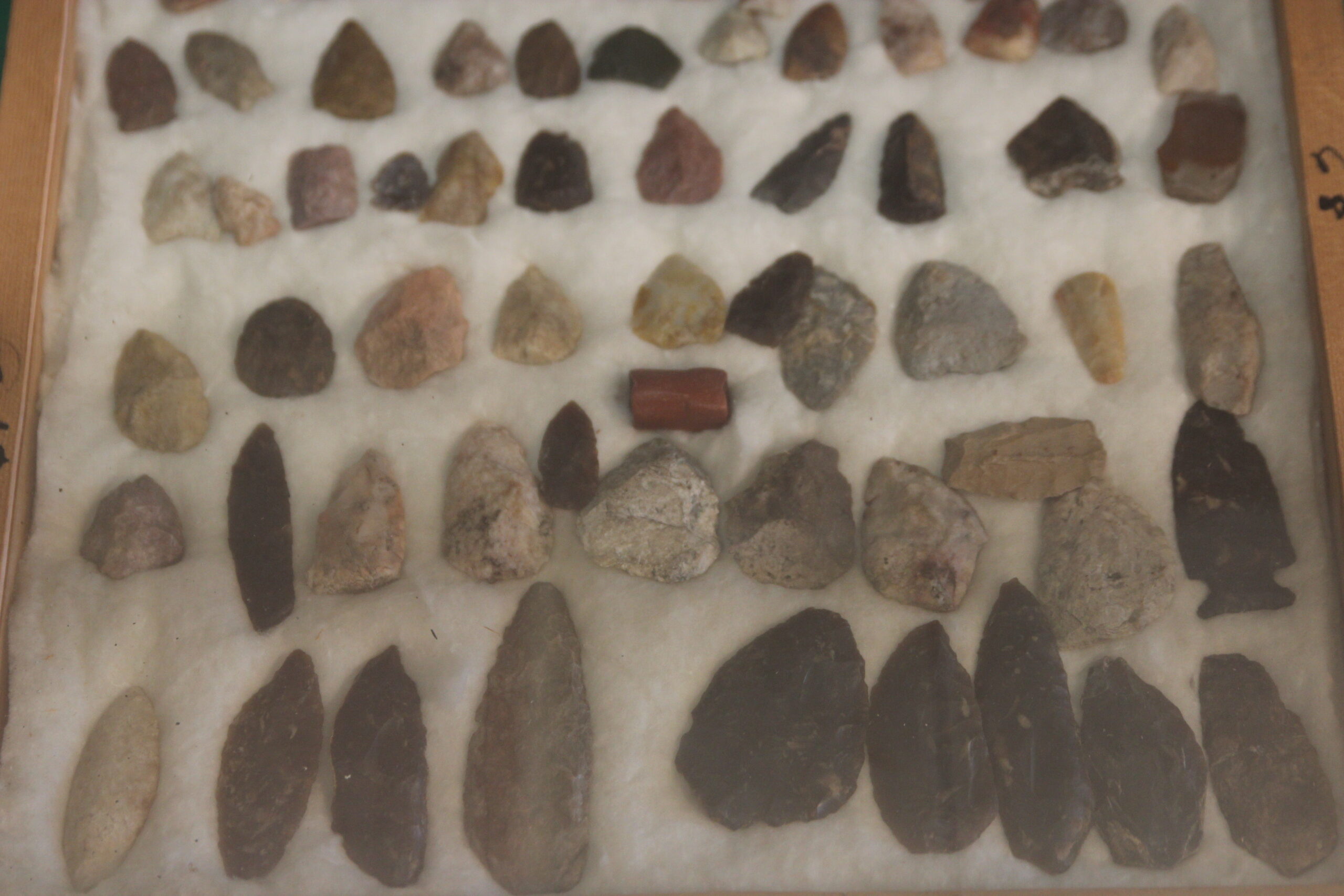
5b. Plaque
Lyle Gibson was awarded the Order of the British Empire for bravery after attempting to rescue two people from an airplane crash. Unfortunately one died.
5c. Cornerstone (in with other stone implements on back wall)
This was to have been the cornerstone for the new A. E. Hill Co. Ltd. store. It was ordered from England but didn’t arrive until the store was almost completed so has always been housed within the store.
6a. Cupboard
Constructed by Alfred Hicks at a cost of $17.00.
6b. Elevator
This elevator was used by the A. E. Hill Co. Ltd. to transport goods from the main floor to the upper floor. You stand on the platform and use the rope to pull the elevator up or down. The original permit is on the pole beside it.
7a. Letter for the Queen
Letter from Queen Mary to the Hartney Queen’s Needlework Guild, dated Feb. 4, 1919, thanking them for their efforts in making items for the soldiers in WW1. It is in her own handwriting (in brown cupboard by back wall under glass)

7b. Memorabilia
Collection of memorabilia and letters sent by a soldier, Ernest Diss, to Amy Graham from Hartney during his service in WW1. The museum has subsequently taken the letters and had them made into a book called A Soldier’s Wish.

7c. The Movie in Hartney
Hole blown in the wall of the vault during the filming of The Lookout in 2006. The room was built by the filmmakers to appear as a bank vault and during the course of the movie, the bank was robbed.
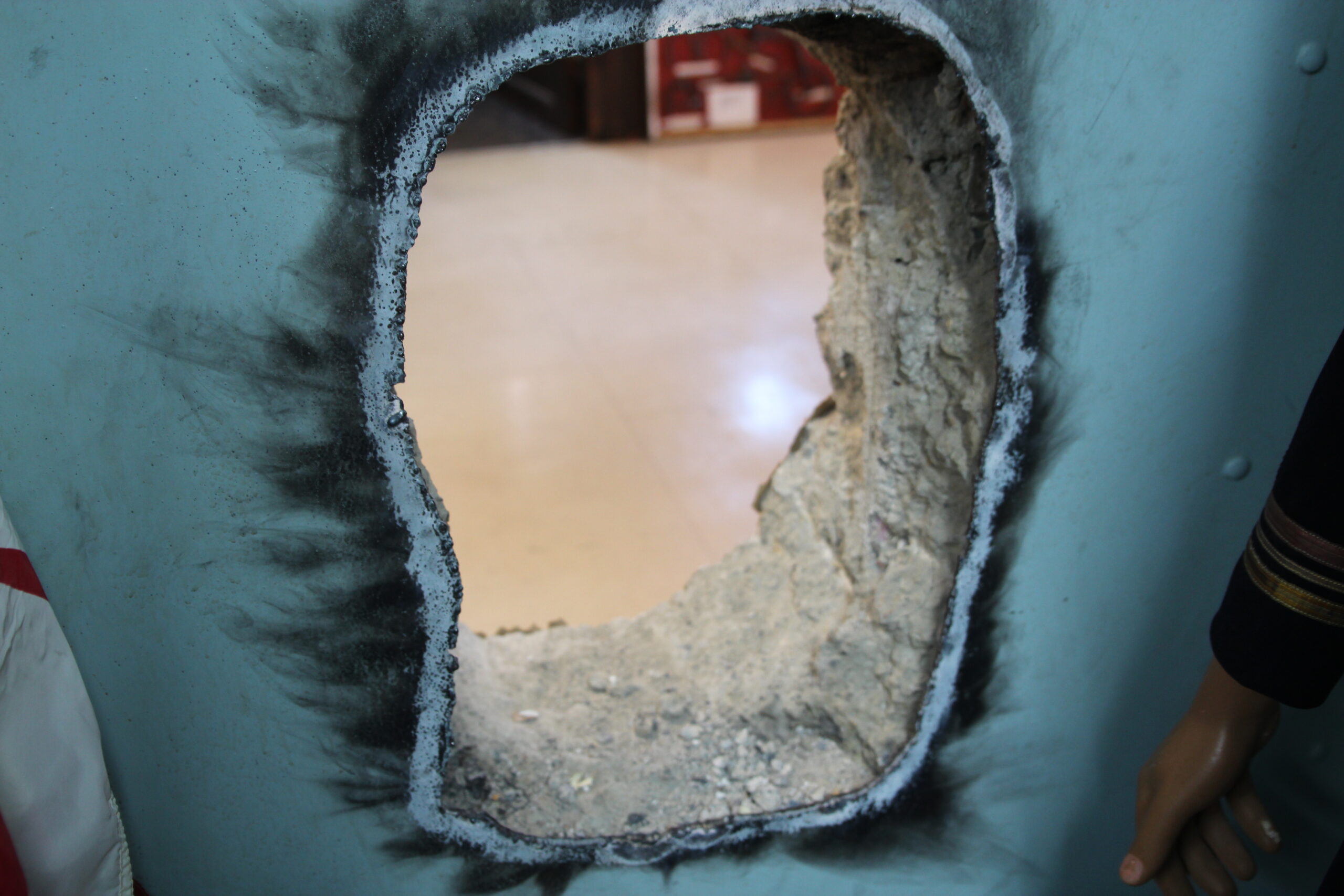
8a. Telephone
Telephone with rotary dial. Hartney had its own telephone office until 1976. It was one of the last offices in Manitoba to close. Everyone in Hartney and area had a one, two or three digit number. Those on party lines had a one or two digit suffix.
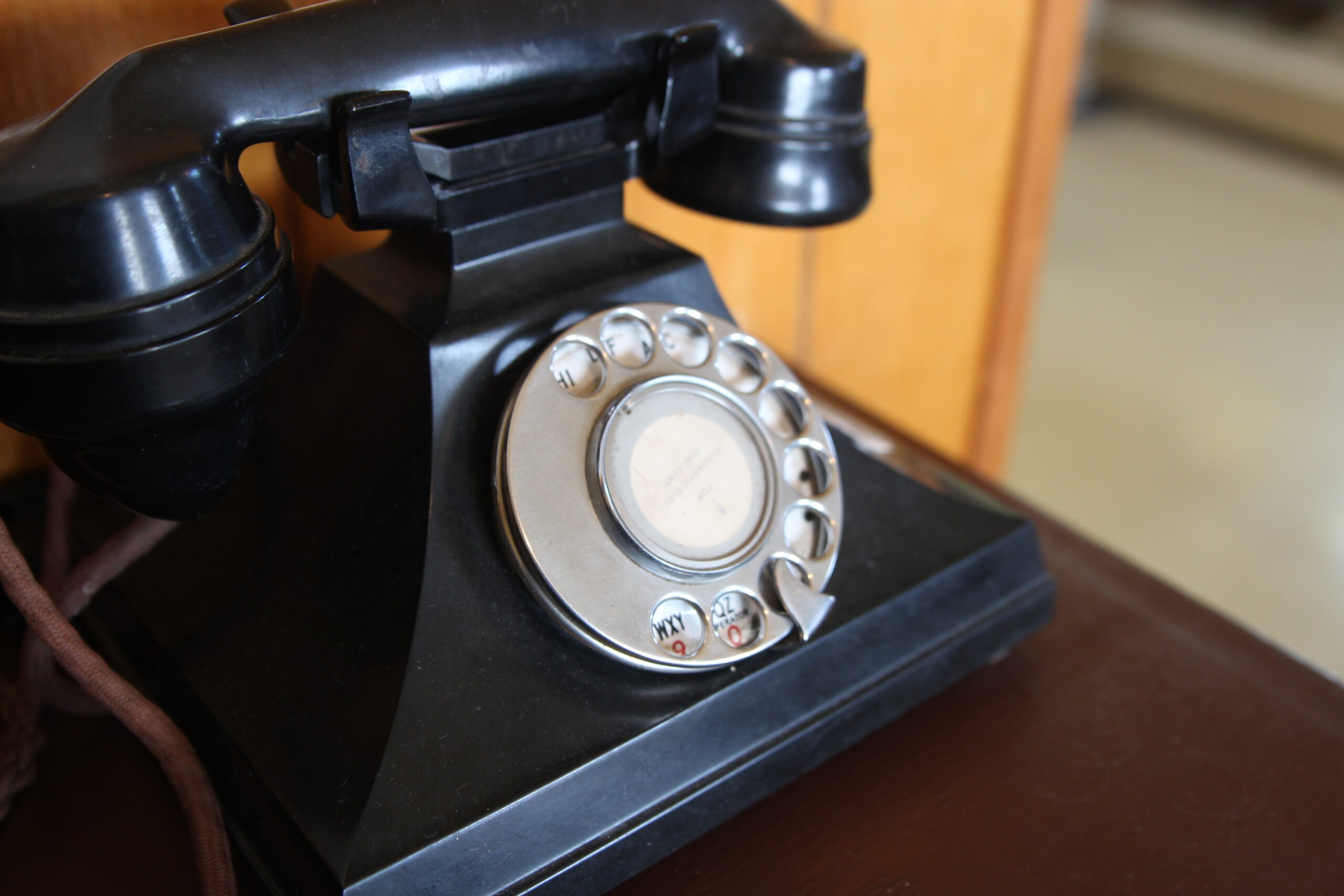
8b. History Book
History of England – this book is one of the oldest items in the museum. It was brought from England by Thomas Crafter and is dated 2.4.1779.
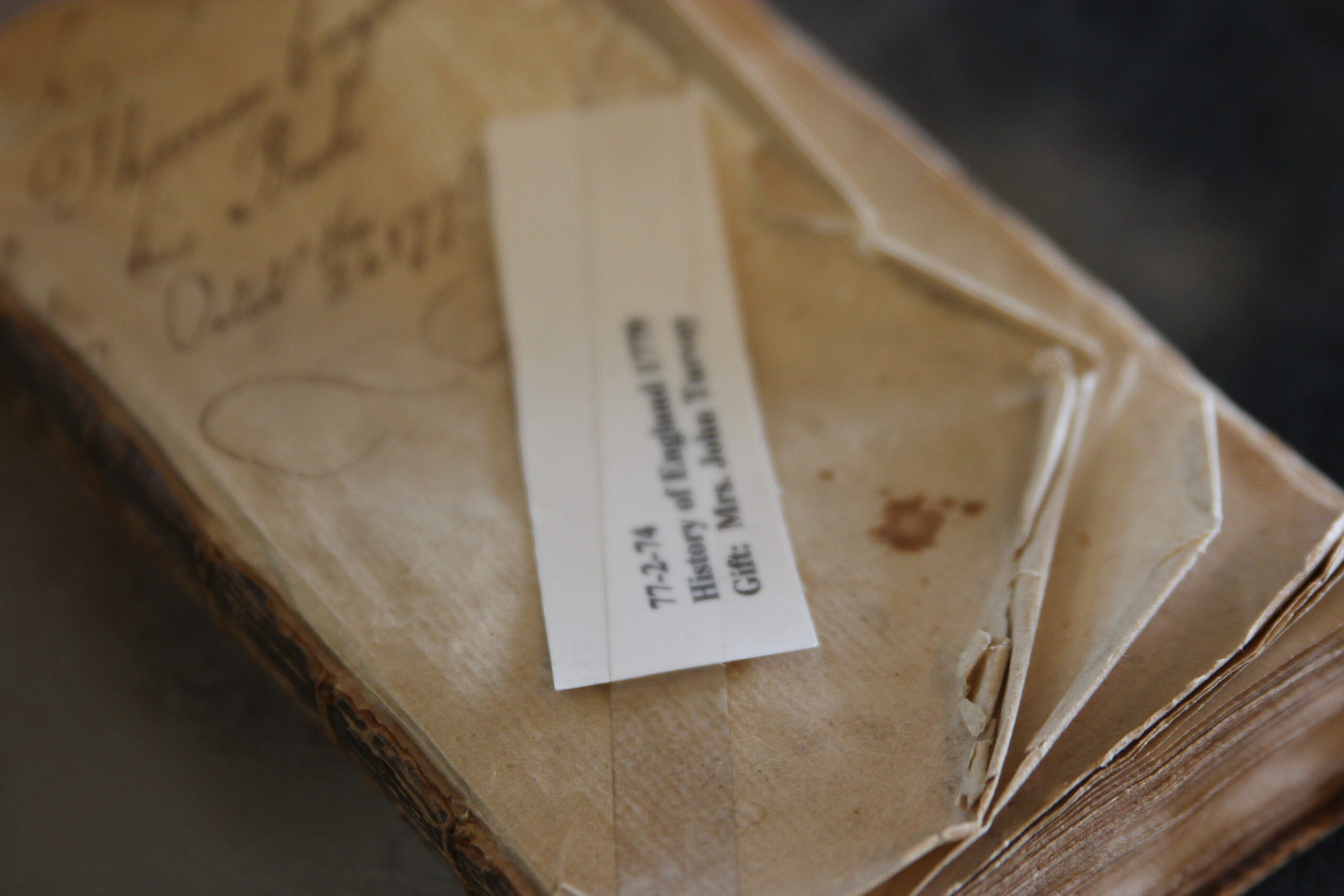
8c. Movie Area
Two movies were shot in this building. In 2006, the movie, The Lookout, staring Jeff Daniels and Joseph Gordon-Levittt, rented the museum. The committee boxed up all the artifacts and put them in storage and the film crew turned the museum into a Bank located in Noel Kansas. In 2007 another film crew arrived to film the Stone Angel staring Ellen Burstyn. Again the artifacts were placed in storage and the museum became Currie’s General Store,
Links to the movie trailers:
The Lookout:
The Stone Angel:
9. Tea Chest
This tea chest is the oldest artifact in the museum. Brought to Canada in 1890 by Mr. Barter , this tea chest belonged to his Great Great Grandmother dating it to the late 1700’s.
10a. Stained glass window
Originally from the St. Andrew’s Anglican Church in Hartney. The window was loaned to the museum by the Brandon Dioses in order to preserve it. It had become quite bowed in the centre. The church was originally built in 1895 and the stained glass window placed in it in 1954.
10b. Quaker historical piece
Quaker Plaque
11. Walnut
This was a gift from Winifred Ransom but we have no record of who produced this little case but inside it folded up are pictures of Hartney.
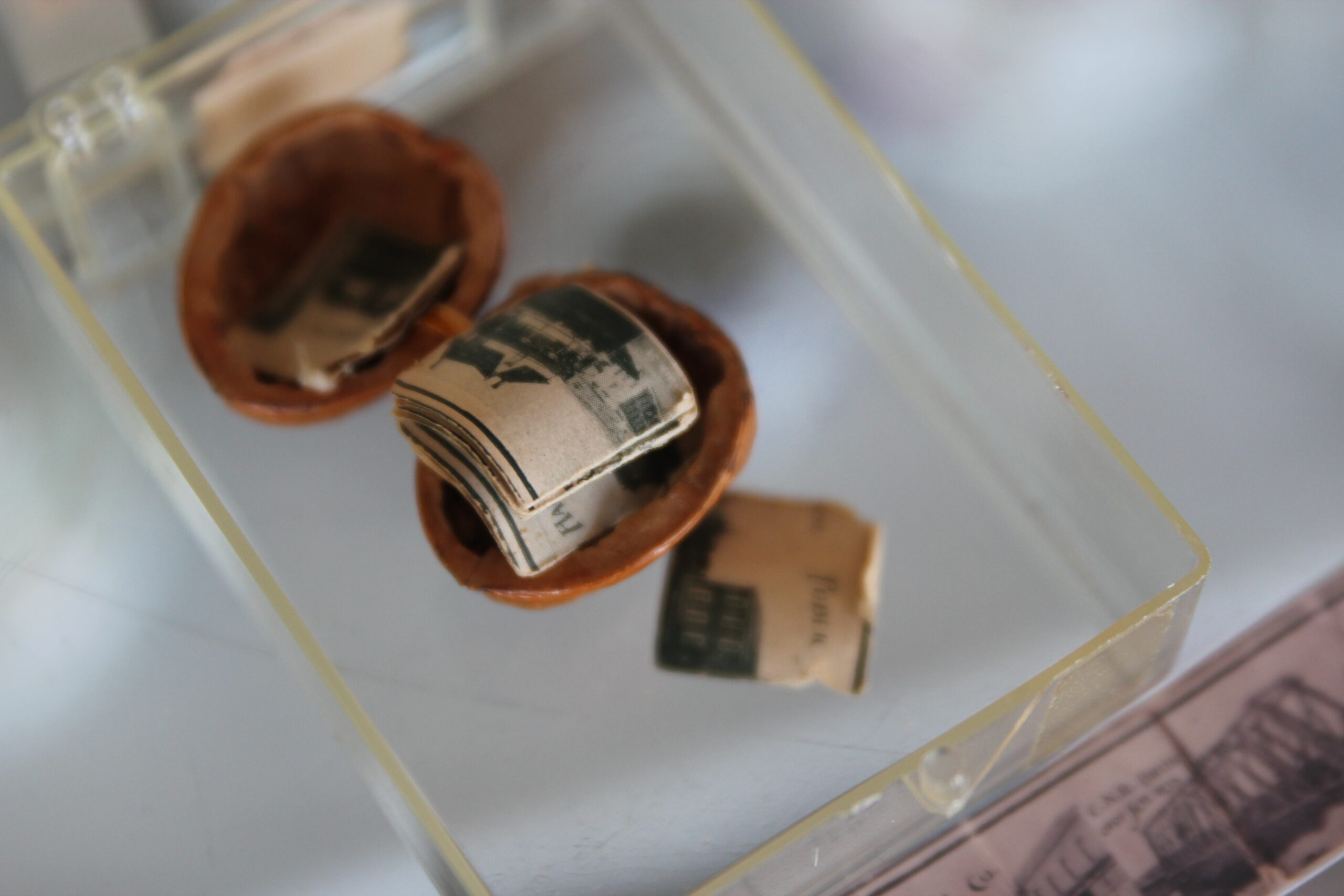
12a. Wheel Chair
This antique wheel chair was used by Mrs. Thomas Hopkins circa early 1900.
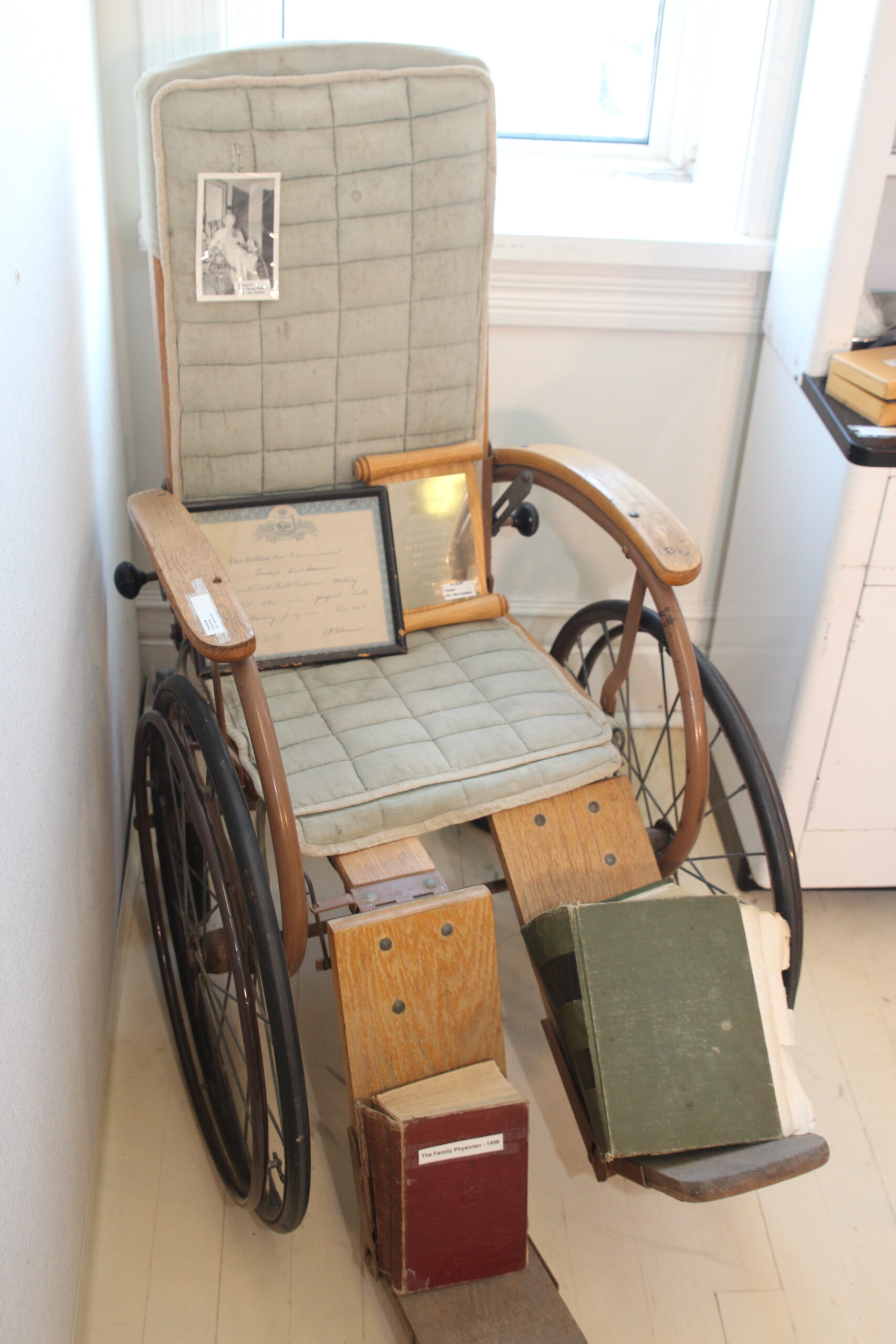
12b. Medical Bag
This bag was used by Miss Flora Hill, a nurse in Northern Manitoba working for The Red Cross. Her nearest doctor was 30 miles away so she diagnose prescribed and dispensed medication, changed dressing, pulled teeth, delivered babies and sometimes prepared the dead for burial. She was often called upon to look after sick animals as well. The bag contains her instruments.
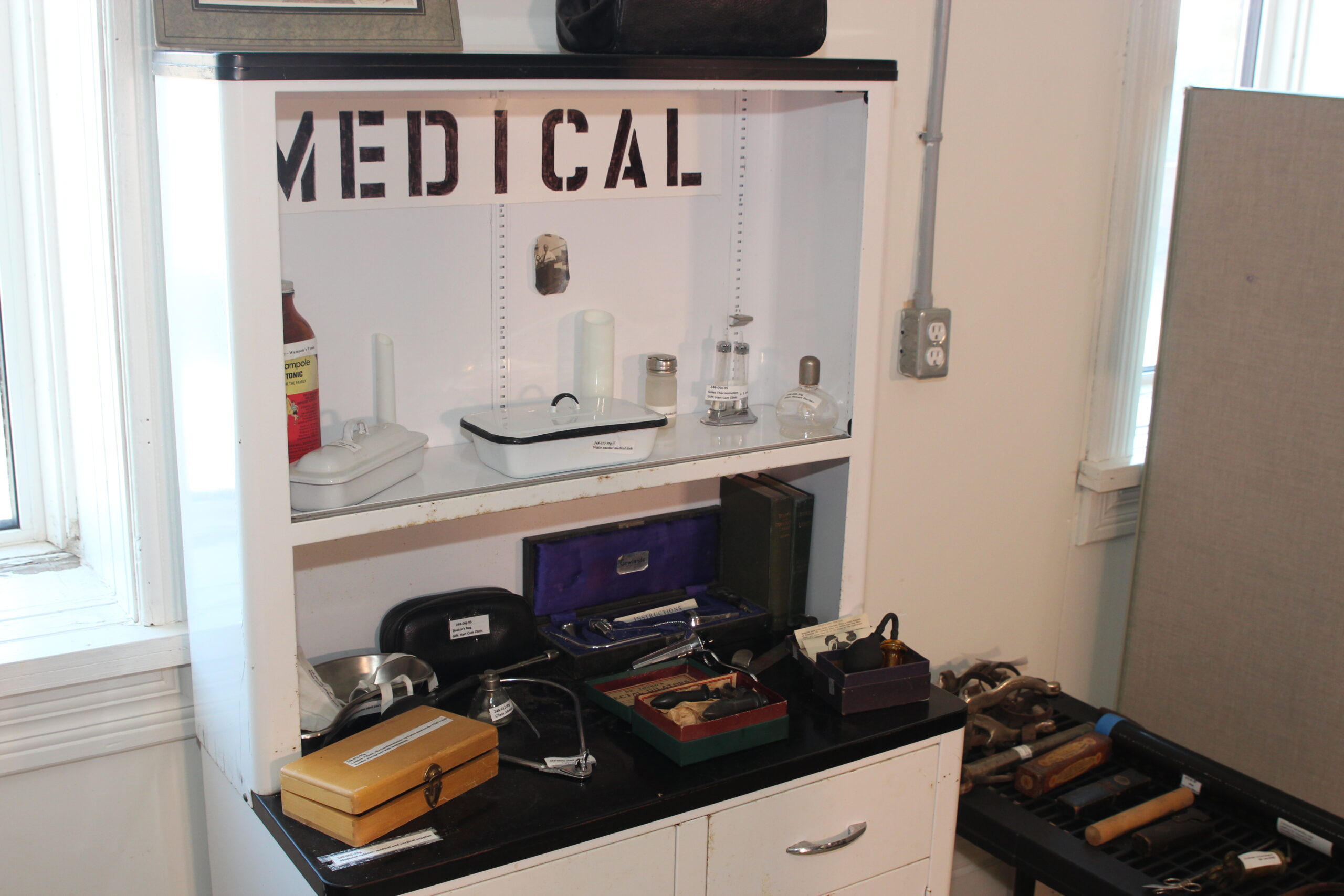
13. School bells
The museum has a collection of all the school bells from the rural and town schools in the area. They were collected and donated by Roberta Keeler.
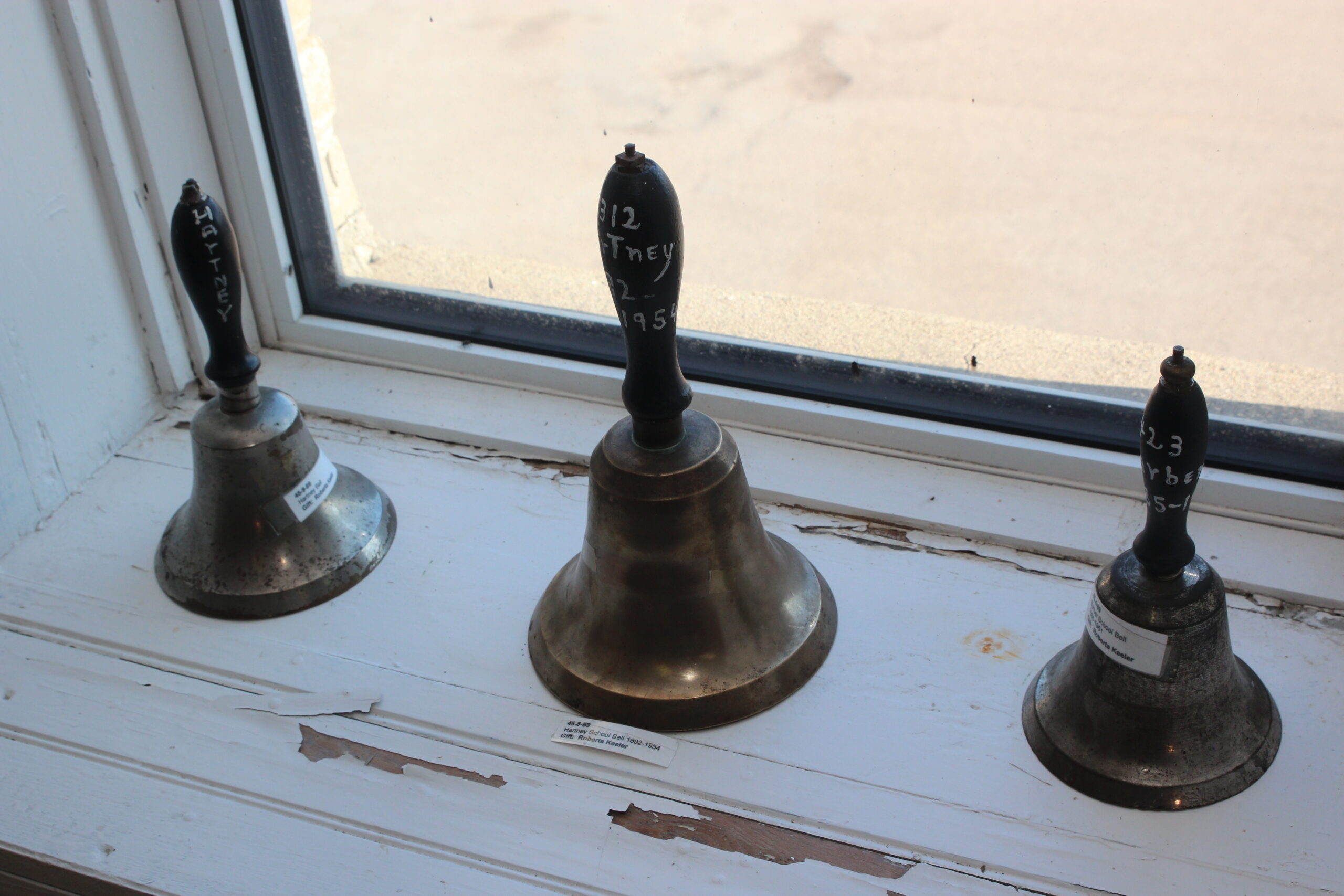
14. Candle Mold
This instrument was used to make candles. You placed the wick in the centre and then filled the tube with hot wax.
15. Vacuum
This is one of the first vacuum cleaners. You place the nozzle on the floor and hold the side wooden handle while pumping the centre handle up and down fast enough to create a vacuum. Then more the nozzle across the carpet all the while pumping the centre handle.
16a. Oven
This oven was used by the Hill family in their home. You filled the bottom with coal and then placed pots designed to fit in the space on top of the metal tongs then closed the top of the oven to seal it and allow the food to cook.
16b. Train Hook and Hoop
When the train pulled into the station, to save time of disembarking from the train, the engineer would hook the daily bag onto a long stick and pass it out the window to the stationmaster. If he had anything he needed to return, he would hook it onto the stick and the engineer would pull it through the window. The hoop was used for odd sized items.
17a. Pin Collection
A collection of curling pins from tournaments and events worldwide. A must see.

17b. Hall of Fame
Lewis Morrison, Hall of Famer.
18. Lodge room
This room houses memorabilia from the Masons, Odd Fellows, Rebekahs, Eastern Star, Foresters and Orange Lodges. The chairs and the benches are from their lodge rooms which were located in the old Town Hall. They were purchased in 1906 when the lodges moved into the Town Hall. The carpet on the floor is the original Odd Fellows carpet from the same year.
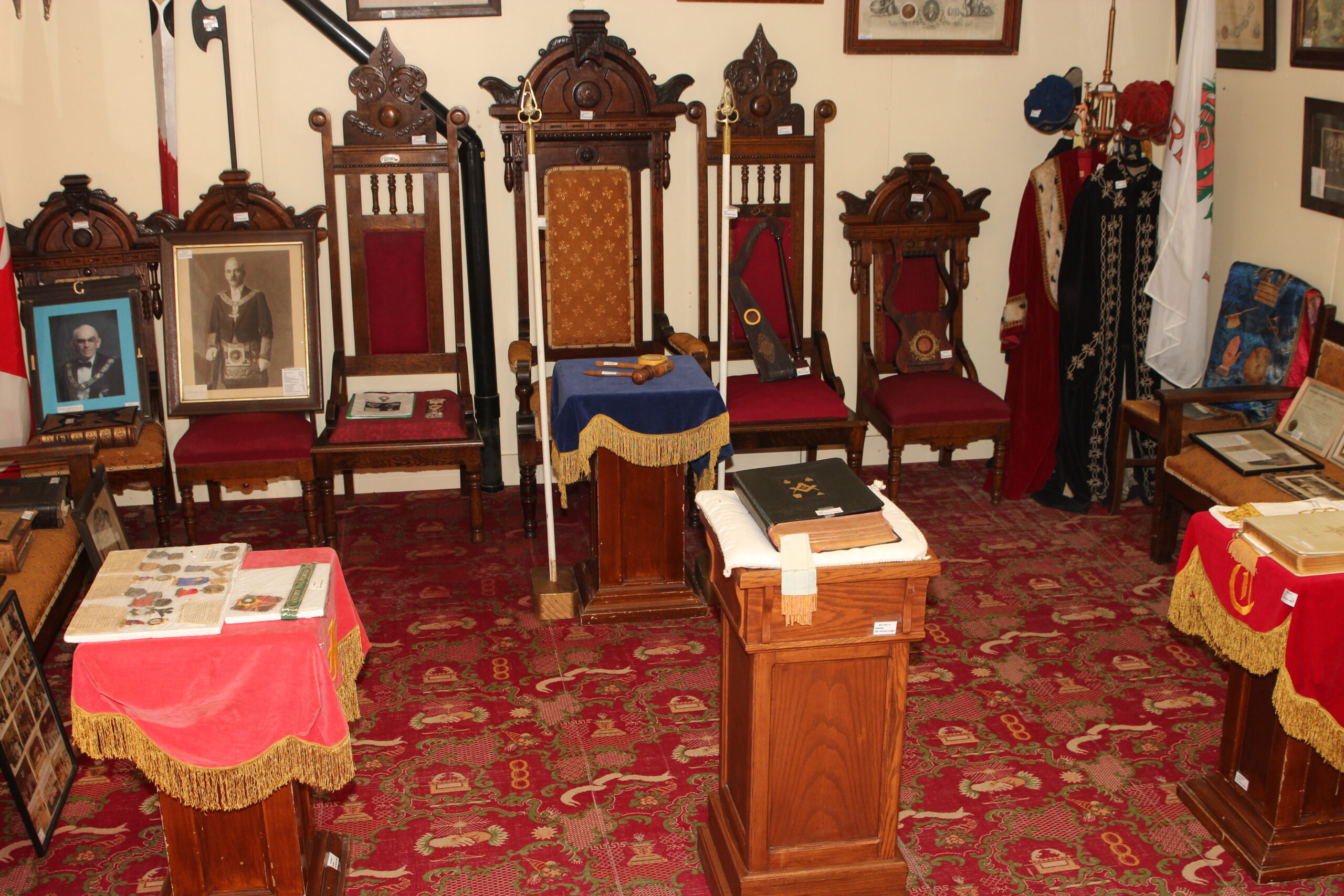
19a. Clydesdale Picture
This picture is of a horse owned by W. H. Galbraith who travelled by rail from Manitoba to Chicago to compete successfully in the first World Fair, the World Columbian Exhibition.
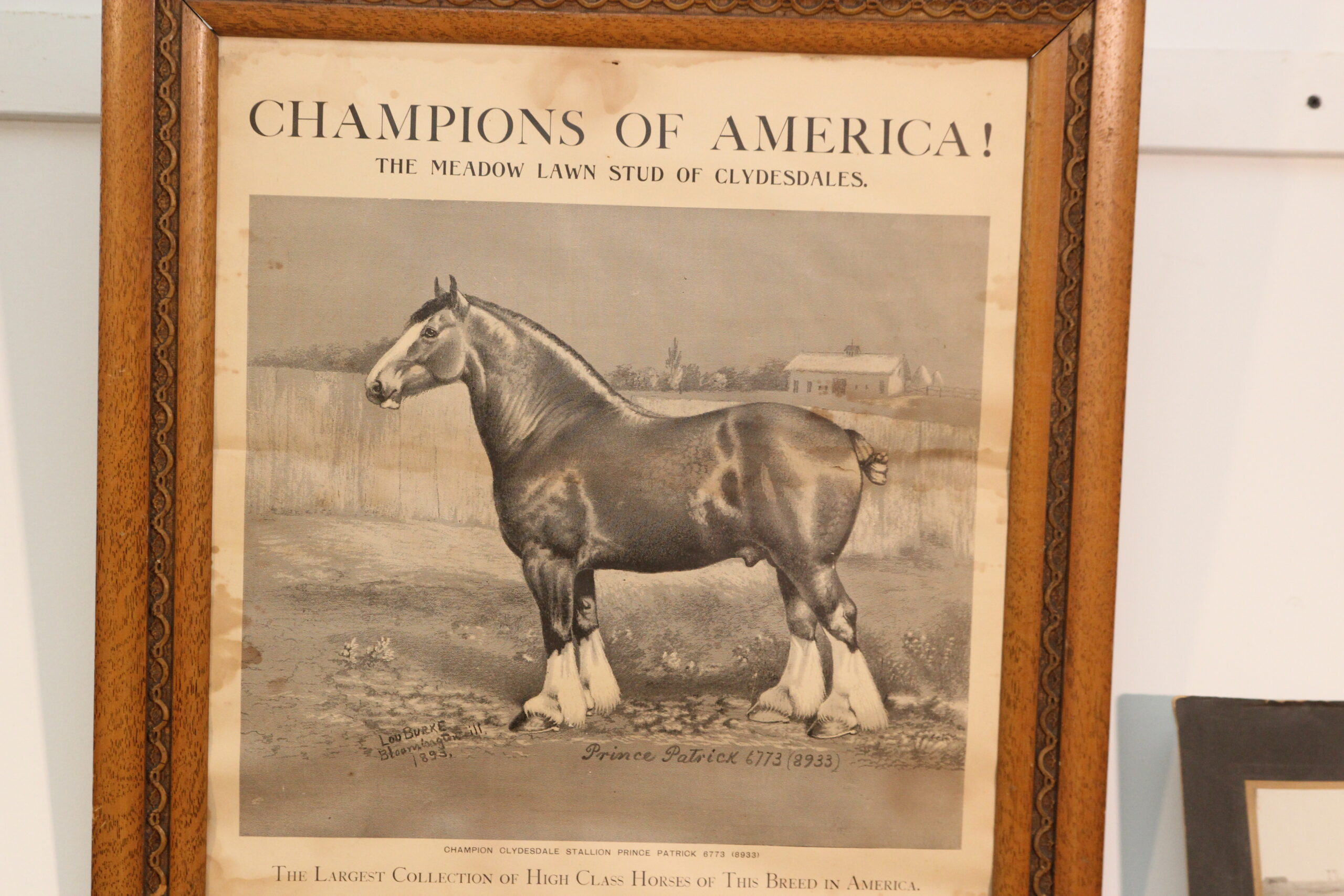
19b. Plowing Match
Plowing Match Poster dated June 29th 1953 at Deleau, Man. This was a favorite sport of farmers dating back to when there were only horse drawn plows. This one features several events to see who could plow the straightest furrows with various number of plow shears. There were events for both horse teams and tractors.

20. Historic Dress
Donalda Whetter‘s wedding dress and going away dress. In 1944, this wedding dress cost $4.98. Donalda’s complete trousseau, including going away dress, hats, gloves and shoes to match both outfits cost under $25.00.
21. Antique trunk
This trunk was brought from Scotland in 1879 by James Duthie. It was later used by him in Guelph where he attended agricultural college in 1881. Subsequently it was used by his children to attend college in 1911, 1918 and 1923.
22. Doll Collection
Donalda Whetter spent a lifetime collection dolls. She bought them on her many travels and friends and family sent them to her from all over the world. She would invite people to her home for tea to view her collection and would charge a small fee. At the end of every year, she brought a fairly substantial sum to the museum from her efforts. When she was no longer able to live in her own home, her collection was donated to the Hart Cam Museum. The collection consisted of 139 dolls. The museum has augmented the doll collection with gifts from other contributors.
